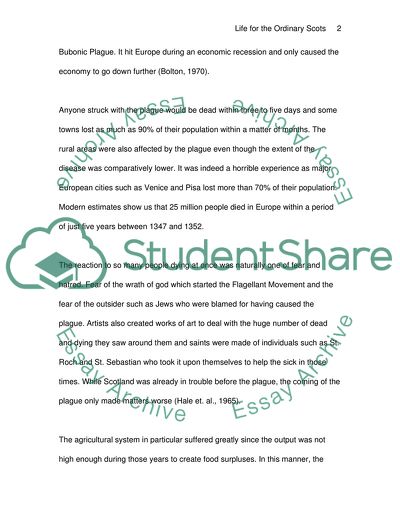Cite this document
(Life of Ordinary Scots in 1300-1500 Essay Example | Topics and Well Written Essays - 1250 words, n.d.)
Life of Ordinary Scots in 1300-1500 Essay Example | Topics and Well Written Essays - 1250 words. https://studentshare.org/history/1546638-short-and-harsh-is-this-a-fair-description-of-life-for-the-majority-of-ordinary-rural-scots-between-1300-and-1500
Life of Ordinary Scots in 1300-1500 Essay Example | Topics and Well Written Essays - 1250 words. https://studentshare.org/history/1546638-short-and-harsh-is-this-a-fair-description-of-life-for-the-majority-of-ordinary-rural-scots-between-1300-and-1500
(Life of Ordinary Scots in 1300-1500 Essay Example | Topics and Well Written Essays - 1250 Words)
Life of Ordinary Scots in 1300-1500 Essay Example | Topics and Well Written Essays - 1250 Words. https://studentshare.org/history/1546638-short-and-harsh-is-this-a-fair-description-of-life-for-the-majority-of-ordinary-rural-scots-between-1300-and-1500.
Life of Ordinary Scots in 1300-1500 Essay Example | Topics and Well Written Essays - 1250 Words. https://studentshare.org/history/1546638-short-and-harsh-is-this-a-fair-description-of-life-for-the-majority-of-ordinary-rural-scots-between-1300-and-1500.
“Life of Ordinary Scots in 1300-1500 Essay Example | Topics and Well Written Essays - 1250 Words”. https://studentshare.org/history/1546638-short-and-harsh-is-this-a-fair-description-of-life-for-the-majority-of-ordinary-rural-scots-between-1300-and-1500.


